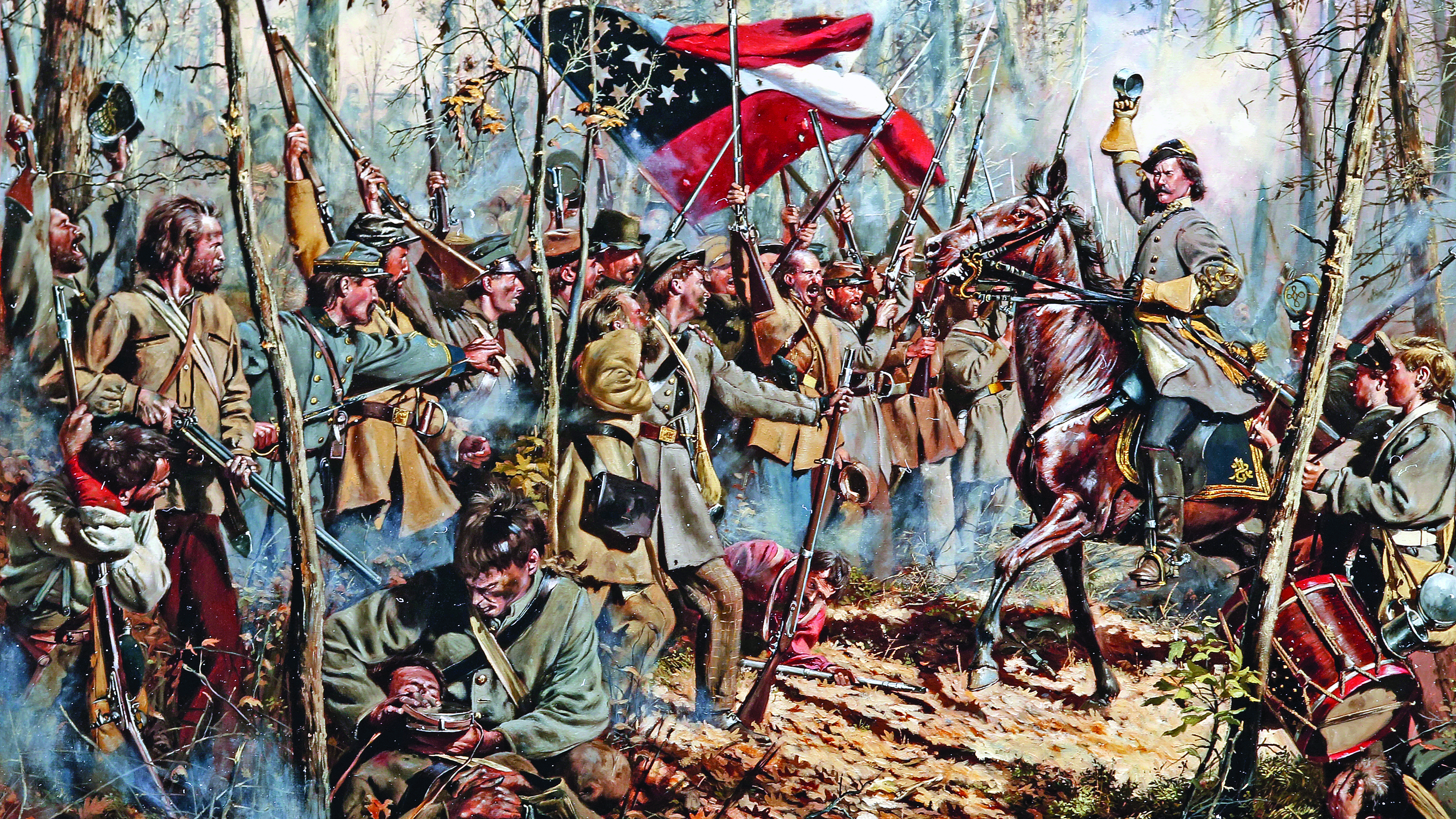The general expected to save the Confederate heartland made a series of poor tactical and strategic decisions
On September 14, 1861, Confederate General Albert Sidney Johnston, the newly appointed commander of an expanded Department No. 2, arrived in Nashville. He faced an immediate decision. Since Maj. Gen. Leonidas Polk’s Corps was already in Columbus, Ky., he either had to withdraw Polk or advance his center into Kentucky. Believing that Kentuckians would rally to the cause, Johnston chose the latter, but the ultimate failure of Kentucky’s response (71 percent of military-age men sat out the war) particularly damaged the Army of Tennessee.
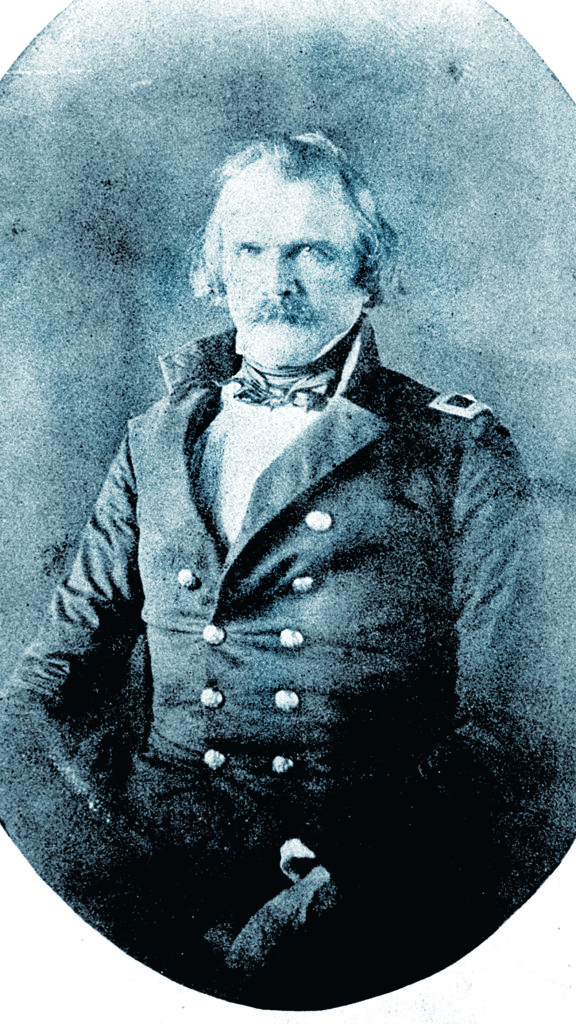
By January 1862, Johnston’s 400-mile-long cordon defense was held by 57,500 troops: 22,000 at Columbus under Polk; 5,000 at Forts Henry and Donelson at the convergence of the Tennessee and Cumberland rivers; 24,500 at Bowling Green under Maj. Gen. William J. Hardee; and 6,000 in East Tennessee under Maj. Gen. George Crittenden. The Confederate line thus had length but not depth. Hardee alone faced an estimated 75,000-man Union army under Maj. Gen. Don Carlos Buell. Johnston’s only advantage was unified command, a benefit squandered by his obsession with the center of the line, where he thought the Union offensive would come. He placed a naive trust in Polk to take care of the Henry-Donelson sector, a position that could not be lost under any circumstances. Polk ignored his orders and became involved in his own obsession—Columbus.
Grant and other Union generals recognized what Johnston clearly failed to see—the yawning gap between Columbus and Bowling Green. Grant always viewed Henry as the prime target, since it was the only fortification between Paducah, Ky., and Florence, Ala. The loss of Henry would impact virtually all of Tennessee, northern Alabama, and Mississippi. The trestle of the Memphis, Clarksville & Louisville Railroad—the means by which the Confederates utilized interior lines—would be destroyed. Once past Fort Henry, gunboats could not be stopped short of the shoals at Florence. The fort, half under water, fell almost effortlessly to Union ironclads on February 6, 1862. The Confederate garrison escaped to Fort Donelson. The Union Navy had demonstrated its total dominance of the rivers. The center of Johnston’s line had been torn open.
Johnston and General P.G.T. Beauregard met for the first time at Bowling Green on February 5; the meeting did not go well. It quickly became clear that Johnston had developed no strategy. Beauregard wanted to concentrate at Fort Donelson and use the Cumberland River as a shield. He claimed in the postwar years that Buell never had a pontoon train, which, though true, Beauregard could not have known at the time. What the Louisiana general failed to mention, but which Johnston clearly understood, was that a concentration at Donelson meant that Buell could simply march unopposed to Nashville. Another dangerous dilemma confronted Johnston: If the gunboats passed the heavy guns at Fort Donelson, they could be in Nashville before Hardee’s Corps could withdraw to the Tennessee capital. Hardee would then have to march eastward to cross, probably at Gainesboro.
Johnston began evacuating Bowling Green on February 7, and also planned for a withdrawal from Columbus. Realizing that Fort Donelson would be next on the Union hit list, Johnston reinforced the position with 15,000 men, retaining only 14,000 at Bowling Green. President Jefferson Davis, finally admitting the error of his territorial defense strategy, ordered a Napoleonic concentration. Major General Braxton Bragg, leading more than 7,700 troops, came up from Pensacola and Mobile, and Maj. Gen. Mansfield Lovell boarded 5,000 men onto railroad cars for the trip north. Four Virginia regiments were also dispatched under Brig. Gen. John B. Floyd. The government hurriedly sent 3,600 arms, including 1,200 newly imported Enfield rifles.
It is clear Johnston never believed that Fort Donelson could hold out against a naval attack. So why did he then send an additional 15,000 infantry? Although the general did not tactically control the battle, he set up the potential for disaster. He either should have seen Fort Donelson as a holding action only to be maintained for a reasonable amount of time, or he should have brought the garrison strength up to 30,000 or more. He chose a disastrous middle course by having not enough to win and too many to lose. The coup de grace occurred when Johnston placed in command the two most inept political generals in the West: Floyd and Brig. Gen. Gideon Pillow. Johnston would justify his decision by feebly stating, “They were popular with the volunteers.”
A decisive battle could have been fought if Bragg and Lovell’s 12,700 troops had been dispatched to Tennessee in late December 1861 or if Kentucky had supplied as many troops as Tennessee, which would have put an additional 10,000 men in the ranks. Even so, the land battle should not have been fought at the fort but in the 11-mile sector between Forts Henry and Donelson. Johnston had a week to rush to the scene and prepare for such a battle, but he never left Bowling Green. He clearly had not thought out such a tactic. Nor would reinforcing Donelson with the bulk of Hardee’s Corps, as Beauregard later claimed he suggested, have necessarily worked. Grant could simply delay his attack under the protection of the gunboats at Fort Henry while Buell brushed aside the delaying force, which would leave Johnston caught in a pincer movement, something the Confederate general
well appreciated.
On the bitterly cold afternoon of February 14, the Union fleet—four ironclads and two timberclads—rounded the bend in the Cumberland River and attacked the fort. In a stunning upset, the river batteries prevailed, disabling all of the ironclads. Simultaneously, however, Grant’s army began encircling the land defenses and cutting the Wynn’s Ferry Road, the Confederate line of retreat. The next day, the 15th, the Southern command launched a hammer blow on the Union right, driving it back a mile. Pillow, leading the attack, now hesitated and stunningly ordered the troops back to their earthworks. Seizing the moment, Grant counterattacked with his left and center. The vise around the garrison of 18,000 was shut tight: Donelson was doomed.
The fort surrendered on February 16. The Confederates suffered 1,222 killed and wounded and 14,623 captured; only 2,286 escaped. The prisoners were exchanged in the fall of 1862, but deducting those dead and disabled from prison life and those who took the oath, it is doubtful that 50 percent ever returned to the ranks. Unfortunately, the men were not on the field at Shiloh Church, Tenn., on April 6-7, 1862.
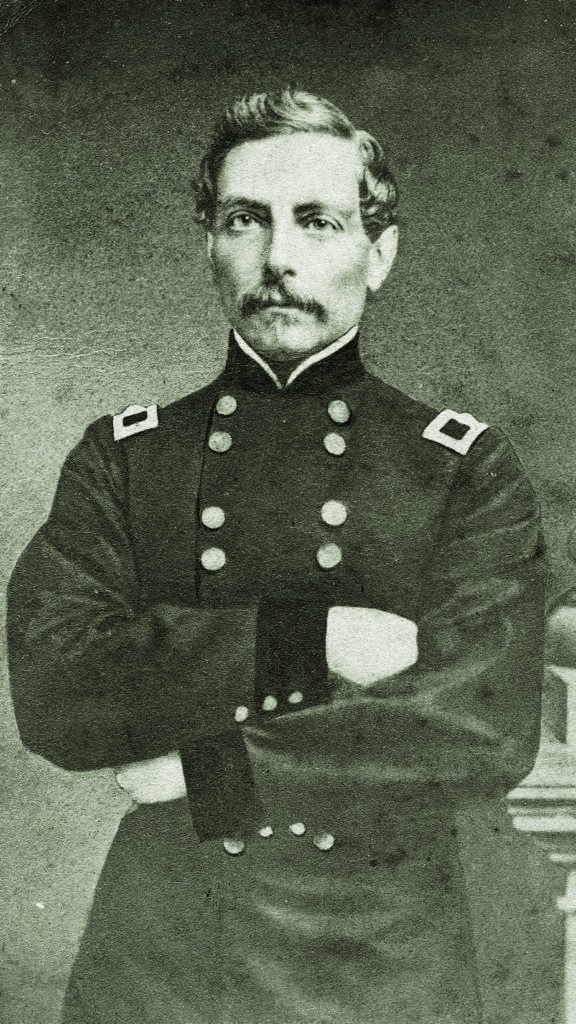
In a meeting with Beauregard in Nashville on February 14, Johnston stated his plan to withdraw to Stevenson, Ala., along the line of the Nashville & Chattanooga Railroad. He rethought the issue and instead withdrew to Decatur, Ala., midway between Corinth, Miss., and Chattanooga. Some historians have suggested this reversal was due to Beauregard’s increasing dominance. When Governor Isham Harris met with Johnston on February 23, he related Beauregard’s desire to concentrate the two wings of the army at Corinth. Johnston proclaimed that he was on the verge of making just such a move.
By shifting toward Corinth, however, Johnston had created problems. If Buell moved fast enough, he could interpose his army between Johnston’s and Beauregard’s forces or unite with Grant before the Confederate juncture was complete. Realizing this possibility, Johnston sent Nathan Bedford Forrest, Wirt Adams, and John Hunt Morgan on cavalry raids to burn bridges and otherwise slow Buell. The Army of the Ohio could also march unopposed to Chattanooga. Johnston apparently believed that reinforcements had been rushed to Chattanooga, but East Tennessee lay ripe for invasion.
By late March, a 40,000-man army had concentrated at Corinth, comprised of Hardee’s Corps from Bowling Green, Polk’s Corps from Columbus, Crittenden’s Division from Eastern Kentucky, and Bragg’s Corps from the Gulf Coast. On the 23rd, Johnston met with Beauregard, Polk, and Hardee. The next day, Beauregard later claimed, Johnston committed to striking Grant’s army camped at Pittsburg Landing, Tenn., before Buell’s Army of the Ohio, marching from Nashville, could join it. Johnston’s son, William Preston Johnston, claimed that this had been his father’s intention all along.
By April 2, scouts indicated that the Federals were on the move. With Buell closing in, Beauregard sent a message to Johnston: “Now is the moment to advance and strike the enemy at Pittsburg Landing.” On April 3, Johnston dispatched to Davis that his 40,000 men were marching out to give battle. Davis answered, “I anticipate victory.”
The Battle of Shiloh started late on April 6—an hour and a half late, to be specific. The blame for the tardiness has historically been placed on Hardee for not having his troops fed and in line. The ultimate culpability, of course, lay with Johnston, who, when the first shots were fired at 4:55 a.m. in Fraley Field, was at his headquarters in the rear sipping coffee and still listening to Beauregard rattle on about why there should be no advance. Due to broken alignments, gaps in the line, and starts and stops, Fraley and Seay fields were not cleared until 7 a.m. The second issue was related to Johnston’s leadership role. His choice to lead from the front and leave Beauregard in the rear to direct operations has long been debated. Beauregard later criticized Johnston for reducing himself to the role of a corps or division commander. By 10 a.m., six Confederate brigades, several of them intermingled, swept past Shiloh Church and renewed the assault. Fierce fighting took place at the intersection of the Purdy-Hamburg and Pittsburg-Corinth Roads. Johnston was on the right and Beauregard in the rear, organizing stragglers into ad hoc units; no single mind controlled.
Throughout the afternoon, Bragg launched 10,000 troops in piecemeal attacks against a Union stronghold labeled the “Hornets’ Nest.” Seven or eight assaults were made against the Sunken Road connecting the Corinth Road with the Eastern Corinth Road. Bragg never advanced more than 3,700 troops at a time against the 4,300 defenders. The result of these piecemeal assaults was predictable; there were 2,400 Rebel casualties.
At about 3:30 p.m., Brig. Gen. Daniel Ruggles, commanding a division in Bragg’s Corps, ordered all available artillery brought to bear on the Hornets’ Nest. Some 53 guns were eventually assembled. At a range of 500 yards, the guns blasted away for 20 minutes. The Hornets’ Nest did succumb, but the Federals to the east and the west had been pushed back, the position nearly surrounded. The defenders were doomed, and the artillery merely added to the inevitable. At 5:30, about 2,200 Federals surrendered. Prisoners had been gained, but time had been lost—time that may have made the difference between failure and success.
Bragg has been rightly criticized for using brute force rather than finesse against the Hornets’ Nest; he never carried the position by frontal assault. The one more culpable, however, was Johnston, who lost sight of his objective. He overcommitted troops to the left and allowed headlong assaults in the center that were totally unnecessary. The Hornets’ Nest never had to be reduced, only contained by long-range skirmishing and limited sorties. By committing Brig. Gen. John Breckinridge’s Reserve Corps in the fight, the Confederates drove the Federals back onto Pittsburg Landing rather than away from it, as the battle plan had directed.
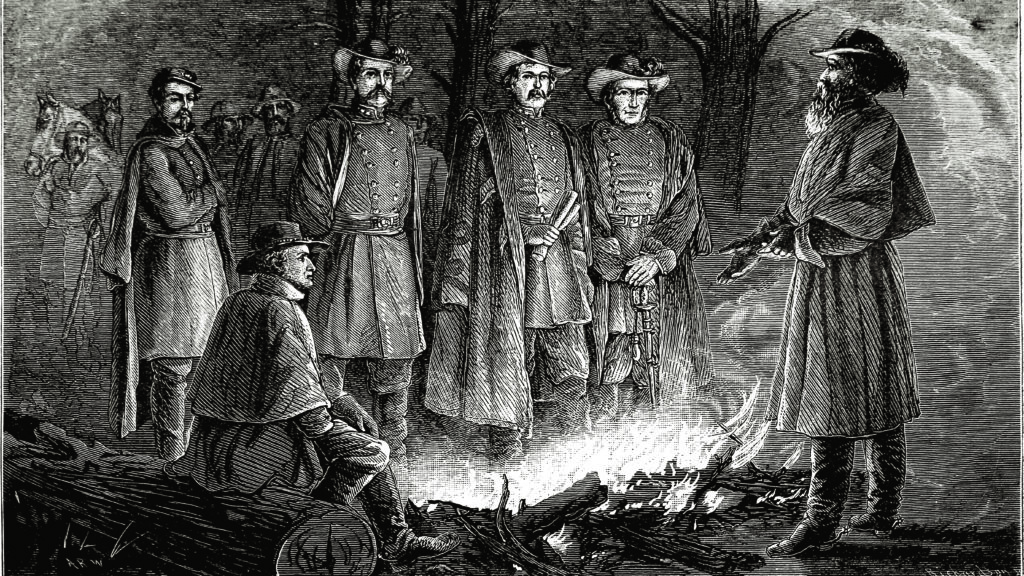
Beauregard, on Johnston’s order, reinforced the left by sending Breckinridge’s “Corps,” actually only a division. He subsequently received information from aides Numa Augustine and George Brent that the center and right were weak and that the army’s flank did not extend to Lick Creek. Beauregard thus redirected two of Breckinridge’s three brigades to the right center. About 2 p.m., Breckinridge—who, with “his right leg thrown around the pommel of the saddle, on which his elbow rested, and with his chin on his hand, was surveying the battle field as calmly as if there had been no bullets whizzing, or shell screaming, around him”—arrived on the Purdy-Hamburg Road south of the Sarah Bell Field. With Johnston not present, his aides—Thomas Jordan, David Urquhart, and William Preston—huddled. Realizing that the battle was slowing down, Jordan said, “I think the reserves should be used,” and rode over to Breckinridge and said, “General Breckinridge, it is General Johnston’s order that you advance and turn and take those batteries.”
Winfield S. Statham’s Brigade, supported by Rutledge’s Tennessee battery, attacked Stephen A. Hulbert’s troops in the Peach Orchard. At 2 p.m., Johnston waved forward the brigades of Statham, William H. Stephens, John K. Jackson, and John S. Bowen in what Shiloh historian Stacey Allen termed a “massive assault.” The Rebels charged in what appeared to be certain victory. When Governor Harris approached Johnston, he was alone, all of his aides having been dispatched. The general suddenly reeled, a bullet having struck his right leg below the knee. At 2:45, Albert Sidney Johnston lay dead.
It has long been debated what role Johnston would have played in the West had he lived. Several historians believe that he might have evolved into the Robert E. Lee of the West. The salient word is might. The facts are these: In the 22 weeks that he commanded in the West, Johnston lost Kentucky and Tennessee; had an entire corps captured at Fort Donelson; and arguably was not on the verge of destroying Grant’s army at Shiloh when he was mortally wounded, despite the strategic surprise, no entrenchments to encounter, and the incredible good fortune of having Maj. Gen. Lew Wallace’s Federal division thrashing around in the woods all afternoon trying to find the battlefield.
Grant, meanwhile, had been forming a final defensive line, his left anchored on the Tennessee River and extending west for more than a mile. The line bristled with artillery—41 guns to be exact—and 18,000 infantry, supported by the gunboats Tyler and Lexington. As the sun began to set, the battle momentarily stalled as the exhausted Rebels regrouped.
Both Bragg and William Preston Johnston would later claim that the victory had been thrown away. Bragg fostered much of the anti-Johnston “lost opportunity” mantra in postwar years. Several staff officers and Bragg’s medical director, J.C. Nott, claimed that when Bragg received the withdrawal order, he expressed neither shock nor objection. When Bragg rode to Beauregard’s headquarters that evening, Colonel Jacob Thompson, a Beauregard aide, emphatically said that Bragg raised no objections. In letters to his wife immediately following the battle, Bragg raised none of the issues that he was so vehement about 11 years later.
On April 7, the Northerners, reinforced with Buell’s army, attacked, yet the Rebels fought with amazing cohesiveness. At 3 p.m., the Confederates, with 1,500–2,000 men and 12–15 guns, pieced together a final defensive line at Shiloh Church.
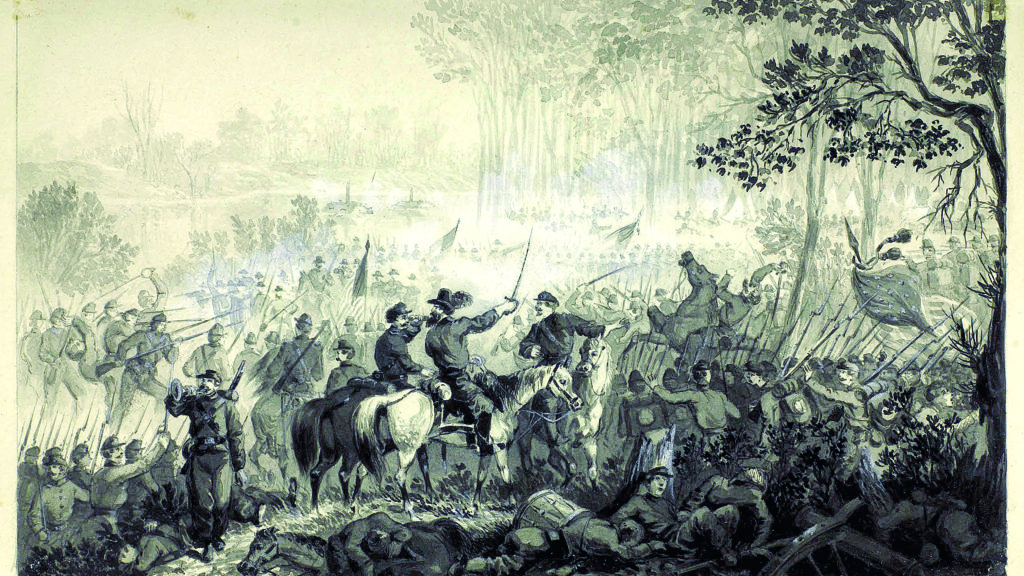
One lesson Shiloh taught was that tactical “surprises” sometimes did not work and could not offset the advantage of operating on the tactical defensive. Indeed, in the two previous surprise attacks in the Western Theater—Wilson’s Creek, Mo., in August 1861, in which the Federals attacked, and Mill Springs, Ky., in January 1862, in which the Confederates attacked—the defenders were victorious. The Federals were certainly surprised at Shiloh, but they quickly rebounded and offered stiff resistance. It took the Rebels 3½ hours to push back William T. Sherman’s division to its second position.
Never again would the Confederates have such an opportunity as at Shiloh. The missteps had not started on April before the army marched out of Corinth. They started when Johnston accepted Beauregard’s grandiose organization (there should have been three corps and not four) and bewildering battle alignment (distributing troops evenly along the line).
A tenacious Federal defense, of course, also had something to do with the Confederate loss. Although defeated on the first day’s battle, Grant accepted responsibility, thus forging professional relationships and avoiding the wretched bickering that developed in the Army of Tennessee.
The Confederates were ultimately reinforced by Earl Van Dorn’s “army” from the Trans-Mississippi, but the Federals were likewise joined by Maj. Gen. John Pope’s 21,000 troops fresh from their victory at Island No. 10. The best the Southerners could have hoped for was a tactical victory that would have boosted morale, bought time, and ended Grant’s career, perhaps the most significant long-term ramification of all. As for the Confederates, the Fort Henry–Shiloh combination resulted in the loss of the Tennessee bowl.
Adapted from Conquered: Why the Army of Tennessee Failed by Larry J. Daniel. Copyright © 2019 by Larry J. Daniel. Used by permission of the University of North Carolina Press. www.uncpress.org

